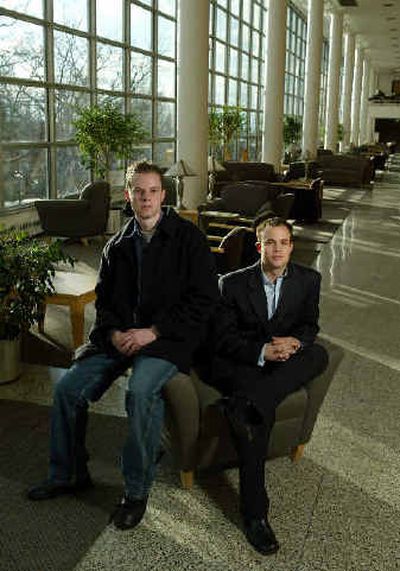Colleges take a gamble on young capitalists

Venture capital is agony and ecstasy, bust and boom, the stress of gambling and the thrill of a front-row view on the latest technologies. And when real money is involved, it’s also one of the hottest classes on business school campuses.
In an effort to elevate their teaching beyond the usual case studies and guest speakers, a handful of schools are raising significant amounts of money to turn over — with a few strings — to students who invest in real startups. The hope is to better train both aspiring venture capitalists and aspiring entrepreneurs, who will need to know what it takes to catch an investor’s eye.
And while it hasn’t happened yet, if a student venture fund happens to back the next Google and fills its university’s coffers, so much the better.
“I went around to different VC firms in the (Salt Lake) valley and said I’d sweep their floors for them if they wanted. Then I saw this opportunity,” said Mark Campbell, a University of Utah student involved with the University Venture Fund there. “It just kills, what the classroom has to offer.”
Utah is one of at least three business schools where students essentially run venture capital funds, along with the University of Michigan and Cornell University. Others, including the University of Maryland, sponsor venture funds that involve students to varying degrees in evaluating investment prospects. Several considering starting student-run funds plan to attend a conference in Utah next month.
It’s nothing new for students to play with real money. Dozens of schools let students advise and manage equity funds to learn about stock picking, and many run business plan competitions or “incubators” that fund student start-ups.
But the schools say having students really get their hands dirty in the VC world — hearing pitches, identifying prospects and then helping companies get off the ground — is a challenge of a different order.
“Unless they’re really putting hard dollars into it, they say, ‘Oh, it’s probably OK,”’ said Timothy Faley, managing director of the Samuel Zell & Robert H. Lurie Institute for Entrepreneurial Studies, which oversees Michigan’s fund. “The difference between, ‘It’s probably OK’ and them staking their name on this deal is pretty significant.”
Faley says the arrangement is also good for the companies. If they get turned down for funding — as most are — they get better feedback than many professionals would bother to offer. And if they do get money, the businesses might also get continued help from students who advise them, and who may even come aboard for internships or full-time jobs.
Most grants run five or six digits, and are a small part of a funding package with other VC firms.
Utah’s fund, which was founded in 2001 and plans to announce next month it has raised $5 million, has backed one company with a $100,000 investment, and plans to announce another deal soon. Cornell’s BR (Big Red) Ventures Fund, which has raised $500,000, has backed four businesses.
Michigan’s $3.5 million Wolverine Venture Fund recently saw one of its portfolio companies go public; Faley says profits from the stock sale mean the fund is earning a slight positive return for the university’s endowment.
In some cases, like Michigan’s, the fund is supported by donations and is essentially a sliver of the university’s endowment that is farmed off to the students to manage. At Maryland, the university is one of many investors.
At Utah, the money comes entirely from outsiders, including individuals and large investment firms.
For students, the programs demand long hours outside of class and typically little course credit, but they are very popular: 60 to 100 students apply for eight slots each year at Michigan, while Utah selects five to 10 from 100 applicants. In some cases, engineers, lawyers and biologists participate, contributing their expertise. Utah accepts some undergraduates and students from other colleges.
The popularity stems in part from the desirability of jobs in venture capital, a tough field to break into.
“Apprenticeship is still the career path of venture capital,” said Michael Grenier, a second-year Maryland MBA student from Columbia Falls, Mont. “I passed up going to some of the other top schools to have a chance to come here and participate in this program.”
But the programs also show students who want to start companies how to view their businesses through the eyes of a venture capitalist. About two-thirds in Michigan’s program are “entrepreneur wannabes” rather than “VC wannabes,” Michigan’s Faley said.
Some academics are skeptical of the programs’ value. Michael Morris, a professor at Syracuse University’s Whitman School of Management, says his school has avoided a true student-run fund, partly because it would demand full-time professional guidance and partly because of potential conflicts.
“If it’s a campus based-venture fund, you’ve got other objectives, other than the pure financial objectives,” he said. “You’ve got learning objectives.”